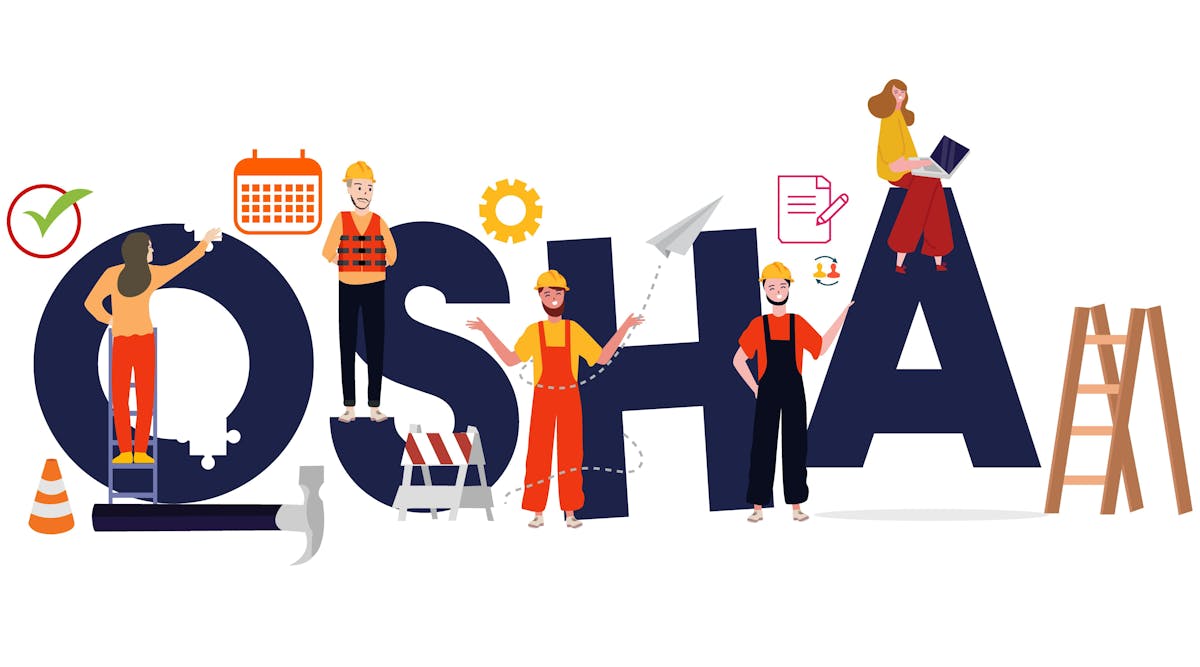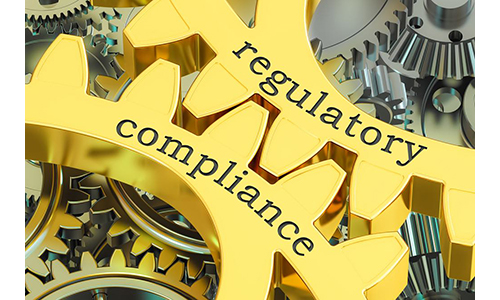Named by President George W. Bush to head OSHA, Edwin G. Foulke Jr. served from April 2006 to November 2008. He also served on the Occupational Safety and Health Review Commission (OSHRC) in Washington, D.C., chairing the commission from March 1990 to February 1994. Foulke is the only person in the United States to serve as both head of OSHA and chairman of OSHRC.
Foulke brings a unique perspective to a conversation about the transition period between the Obama and Trump administrations, since he not only served as assistant secretary of labor, but also was the chair of the OSHRC during the transition period from President George H. Bush to President Bill Clinton.
The first thing that will happen, according to Foulke, is that someone at the Department of Labor (DOL) will be named to head up the Labor Department transition team between the Obama administration and the Trump administration. According to Foulke’s sources, that person will be Deputy Secretary of Labor Christopher P. Lu.
Lu was sworn in as the deputy secretary of (DOL) on April 4, 2014, after being confirmed unanimously by the U.S. Senate. He serves as the chief operating officer of the 17,000-employee organization.
Lu and his team at DOL will be responsible for creating a transition notebook that includes information about the history of the department and its agencies, and a rundown of what those agencies currently are working on in terms of regulations and programs. In the case of OSHA and MSHA, it will include the regulatory agenda for those agencies, which are the regulations they currently have under review in the pre-rule, proposed rule and final rule stage.
The next step, even before the new president is sworn in, is for President-Elect Donald Trump to choose members of his cabinet, including the secretary of labor. The administrator of EPA has the status of cabinet rank, but not the title of “secretary.”
Once those positions have been filled and after the inauguration, then the administration will begin the process of proposing candidates to fill the positions of assistant secretaries who run agencies like OSHA and MSHA.
“Often, the incoming administration continues working on some of the items on the regulatory agenda and there will be some changes in focus at OSHA as a result of the Trump administration,” said Foulke, who offered this list of things he expected the Trump administration to revisit:
1. Walking-Working Surfaces Standard: This oldie but goodie has been on OSHA’s regulatory agenda since 1990. OSHA published a notice to reopen the rulemaking for comment on May 2, 2003. Based on comments received on the 2003 notice, OSHA determined that the rule proposed in 1990 was out of date and did not reflect current industry practice or technology.
The agency published a second proposed rule on May 24, 2010, which reflected current information and increased consistency with other OSHA standards. Hearings were held Jan. 18-21, 2011. The proposed standard is listed on the Spring 2016 regulatory agenda as “Final Rule Stage.”
“I signed off on this eight years ago when I was assistant secretary of labor,” said Foulke, who expects this rule to move forward in the final months of the Obama administration. Potentially, it could come under review by the Trump administration or be subject to the Congressional Review Act (CRA), in which lawmakers have 60 legislative days to overturn a regulation from the administration (or previous administration). If lawmakers are not in session for the 60 days before adjourning their final session, the clock resets, and the new Congress is given another 60 days to act.
The only time CRA was used occurred in 2001 and it was used to overturn an OSHA standard for ergonomics.
2. Respirable Silica Standard – This standard has drawn criticism from a number of industry and business groups, which claim that key components of the standard – particularly ones related to exposure assessments, monitoring of respirable silica levels by a competent person and medical examinations for workers – are burdensome and that compliance is nearly impossible.
According to Foulke, CRA cannot be used to overturn the respirable silica standard, because the clock for the CRA has run out. He does think the Trump administration might re-examine the standard, “because the business community has done a good job of showing that compliance just isn’t feasible,” says Foulke.
It currently is being litigated however, and a judge could delay the June 23, 2017 compliance date for construction and the June 23, 2018 effective date for general industry and maritime. Potentially, the Trump administration could re-open the rule-making process for the standard and revise it.
3. Recording and Reporting Occupational Injuries and Illnesses – This rule, revising OSHA’s Recording and Reporting Injuries and Illnesses regulation, was issued on May 11 and was scheduled to take effect Aug. 10, including provisions of the rule that prohibit employers from discouraging workers from reporting an injury. Phased-in data submissions were scheduled to begin in 2017.
As a result of litigation, OSHA agreed to delay enforcement of the anti-retaliation provisions until Dec. 1. Foulke believes that although the time limit for CRA has run out for this regulation, these legal challenges could impact its implementation even further and that it will be a regulation revisited by the Trump administration, which could reopen and revise it.
4. Whistleblower Statutes – OSHA’s Whistleblower Protection Program enforces the whistleblower provisions of more than 20 whistleblower statutes protecting employees who report violations of various workplace safety and health, airline, commercial motor carrier, consumer product, environmental, financial reform, food safety, health insurance reform, motor vehicle safety, nuclear, pipeline, public transportation agency, railroad, maritime and securities laws. Rights afforded by these whistleblower protection laws include, but are not limited to, worker participation in safety and health activities, reporting a work-related injury, illness or fatality or reporting a violation of the statutes herein.
The Workplace Safety and Health Section 11(c) of the OSH Act prohibits employers from discriminating against their employees for exercising their rights under the OSH Act. These rights include filing an OSHA complaint, participating in an inspection or talking to an inspector, seeking access to employer exposure and injury records, reporting an injury and raising a safety or health complaint with the employer.
Changes to whistleblower statutes in the past two years have shifted the focus from the whistleblower providing the “burden of proof” that retaliation has occurred to the secretary of labor finding there is “reasonable cause to believe that retaliation has occurred,” a more relaxed standard of proof that favors the whistleblower. Foulke thinks the Trump administration will change the focus back to requiring a stronger burden of proof.
5. Increased OSHA Penalties – For the first time since 1990, OSHA increased fines for violations of workplace health and safety laws and did it in a big way: The fine for a willful or repeat violation jumped from $70,000 to $124,709 per violation.
“You can’t roll them back [easily] because the penalty change is a statute,” says Foulke. “But, the new assistant secretary of labor for OSHA can refuse to allow continuing increases in penalties based on the cost of living. One hundred and twenty-four thousand dollars for a willful or repeat violation is a sizeable number already. Why add in a cost of living increase?”
In November 2015, Congress enacted legislation requiring federal agencies to adjust their civil penalties to account for inflation. In response, the DOL adjusted penalties for OSHA. Congress can change that statute once again under pressure from a Trump administration.
6. OSHA Enforcement – Foulke expects the Trump administration to take a look at several aspects of OSHA enforcement, including:
- The Joint Employer Doctrine – The Department of Labor’s Wage and Hour Division (WHD) regularly encounters situations where more than one business is involved in the work being performed and where workers may have two or more employers. More and more, businesses are varying organizational and staffing models by sharing employees or using third-party management companies, independent contractors, staffing agencies or labor providers. Foulke believes that the Trump administration will re-evaluate joint employment, in particular situations involving the National Labor Relations Board (NLRB), DOL’s Wage and Hour Division and OSHA. The NLRB issued a ruling in Browning-Ferris Industries of California Inc. in August 2015 that significantly altered the joint employer standard. The ruling increased the likelihood that companies that utilitize temporary staffing agencies will be deemed joint employers for National Labor Relations Act purposes.
- Repeat Violations – According to the OSHA Field Manual used by inspectors, an employer may be cited for a repeated violation if that employer has been cited for the same or substantially similar condition or hazard and the citation has become the final order of the Occupational Safety and Health Review Commission. Foulke points out a citation can be used as the basis of a repeated violation if it was issued within five years of the final order date of the previous citation or within five years of the final abatement date. He believes the look back date of five years, which recently was increased from three years, might be rolled back to three years by the Trump administration, particularly given the increase in fines for repeat citations.
- Severe Violators Enforcement – “It has been very active under the Obama administration,” says Foulke, with many companies being added to the severe violators list. He expects the Trump administration to not only look at that program but to take a look at the companies included on the list and why they were placed on it.
7. Non-Company Personnel Participation in OSHA Inspections – A union representative or other non-company personnel is allowed to attend a walk-around with an OSHA inspector at a non-union facility, allegedly to represent employees. “What expertise does this person have? What qualifications to represent those employees?” Foulke asks, saying he thinks this could end up under a Trump administration microscope.
8. Restroom Access for Transgender Workers – OSHA recently published a guide to restroom access for transgender workers. Assistant Secretary of Labor for OSHA Dr. David Michaels said at the time: “OSHA’s goal is to assure that employers provide a safe and healthful working environment for all employees.”
“How is this a safety issue?” asks Foulke, adding he doesn’t think this issue will be pursued under a Trump administration.
9. Compliance Assistance – The Obama administration appears to be focused on enforcement, and Foulke believes that compliance assistance will be a focus for the Trump administration. The Obama administration pulled staff from compliance assistance programs to bolster the number of staffers in enforcement. Foulke believes the reverse will be true in a Trump administration.
“I believe that compliance assistance and partnership and alliance programs will be a focus in the new administration,” says Foulke, who notes such programs were a focus for OSHA when he was assistant secretary of labor.
Often, Republican administrations are seen as soft on enforcement, while Democratic administrations are seen as tough. Interestingly, in FY 2015 during a Democratic administration, there were 35,820 OSHA inspections. In FY 2007, when Foulke was assistant secretary of labor for Republican President George W. Bush, there were 39,324 OSHA inspections.
“Enforcement is important, but compliance assistance in helping and educating employers to reduce injuries, illnesses and fatalities is key to improving workplace safety,” says Foulke, who often criticized companies he perceived as "bad apples" – employers with a poor safety record – during his tenure at OSHA.
10. Fair Pay and Safe Workplaces – On July 31, 2014, President Obama signed the Fair Pay and Safe Workplaces Executive Order to require prospective federal contractors to disclose labor law violations and give agencies guidance on how to consider labor violations when awarding federal contracts. The executive order “also ensures that contractors’ employees are given the necessary information each pay period to make sure that they are getting paid what they are owed, and that workers who are victims of sexual assault or sexual harassment get their day in court and are not forced to arbitrate these claims if they work for companies with very large federal contracts,” according to DOL.
“I assume Trump will immediately repeal the Fair Pay and Safe Workplaces Executive Order,” says Foulke. “That’s the problem with an executive order versus a regulation: One administration puts them in and another takes them out.”
11. The Occupational Safety and Health Review Commission – The OSHRC currently has a vacancy and is operating with only two members. The Trump administration could move immediately to name a Republican to fill that vacancy, giving the party two out of three seats on the commission. As the commission decides contests of citations or penalties resulting from OSHA inspections, this shift could be significant, says Foulke.










































































